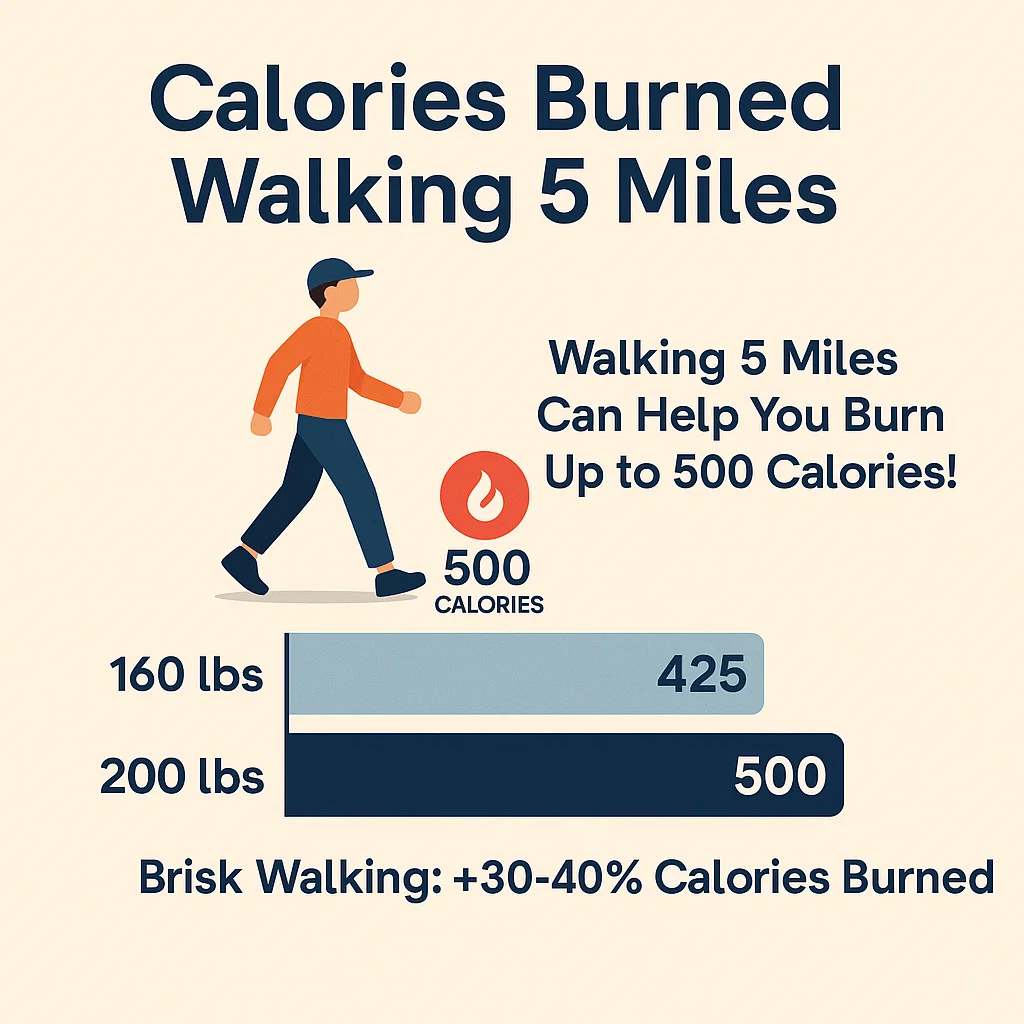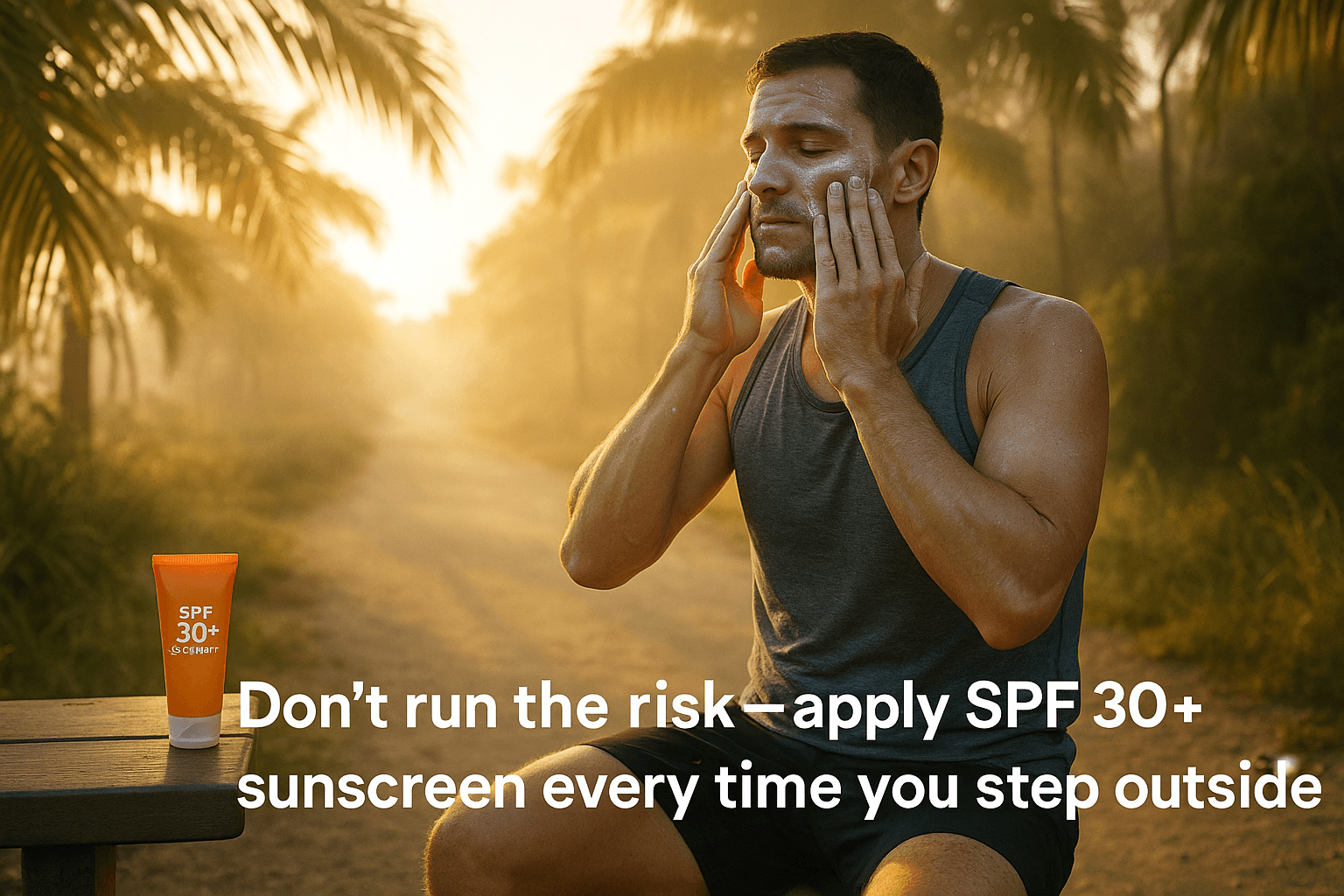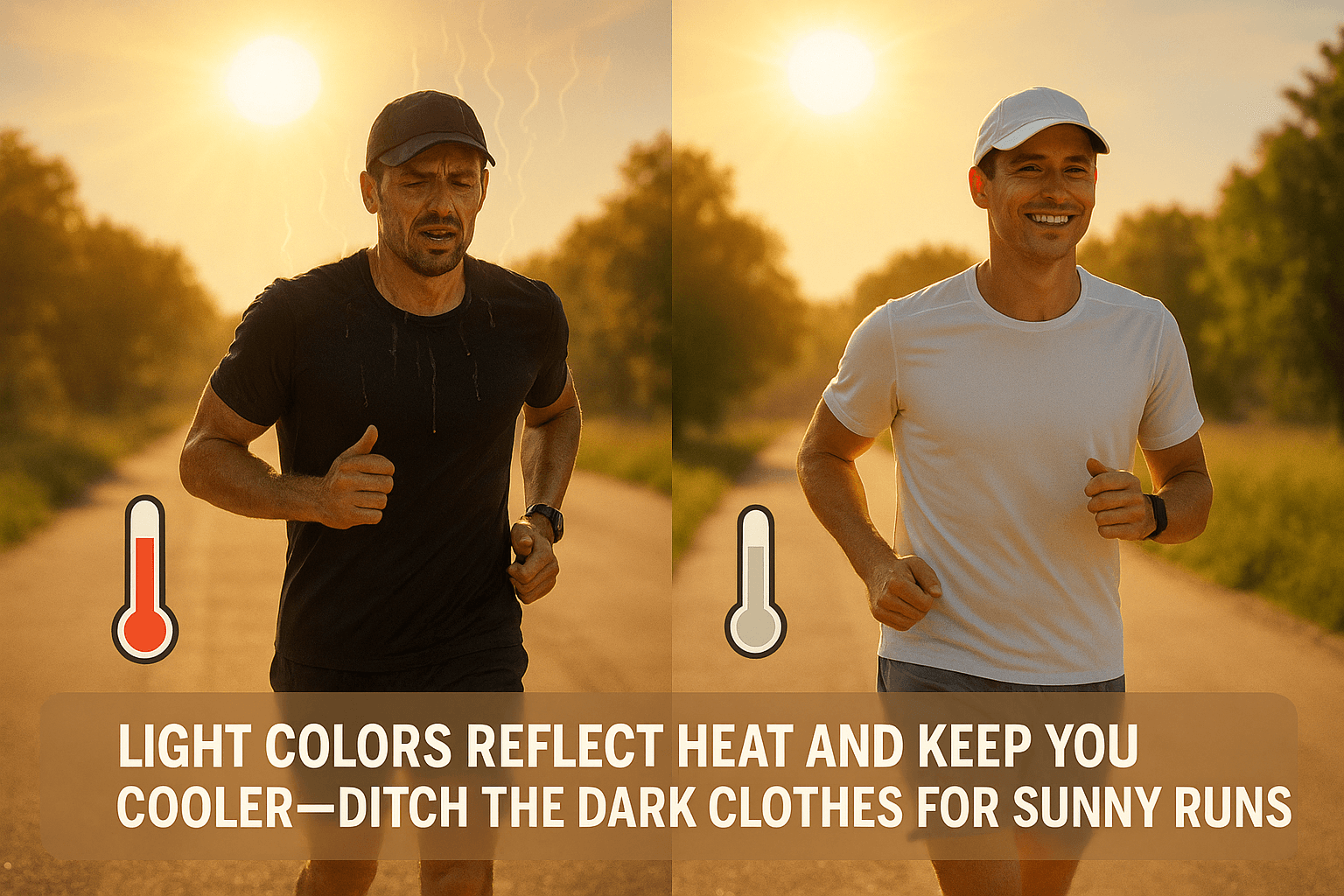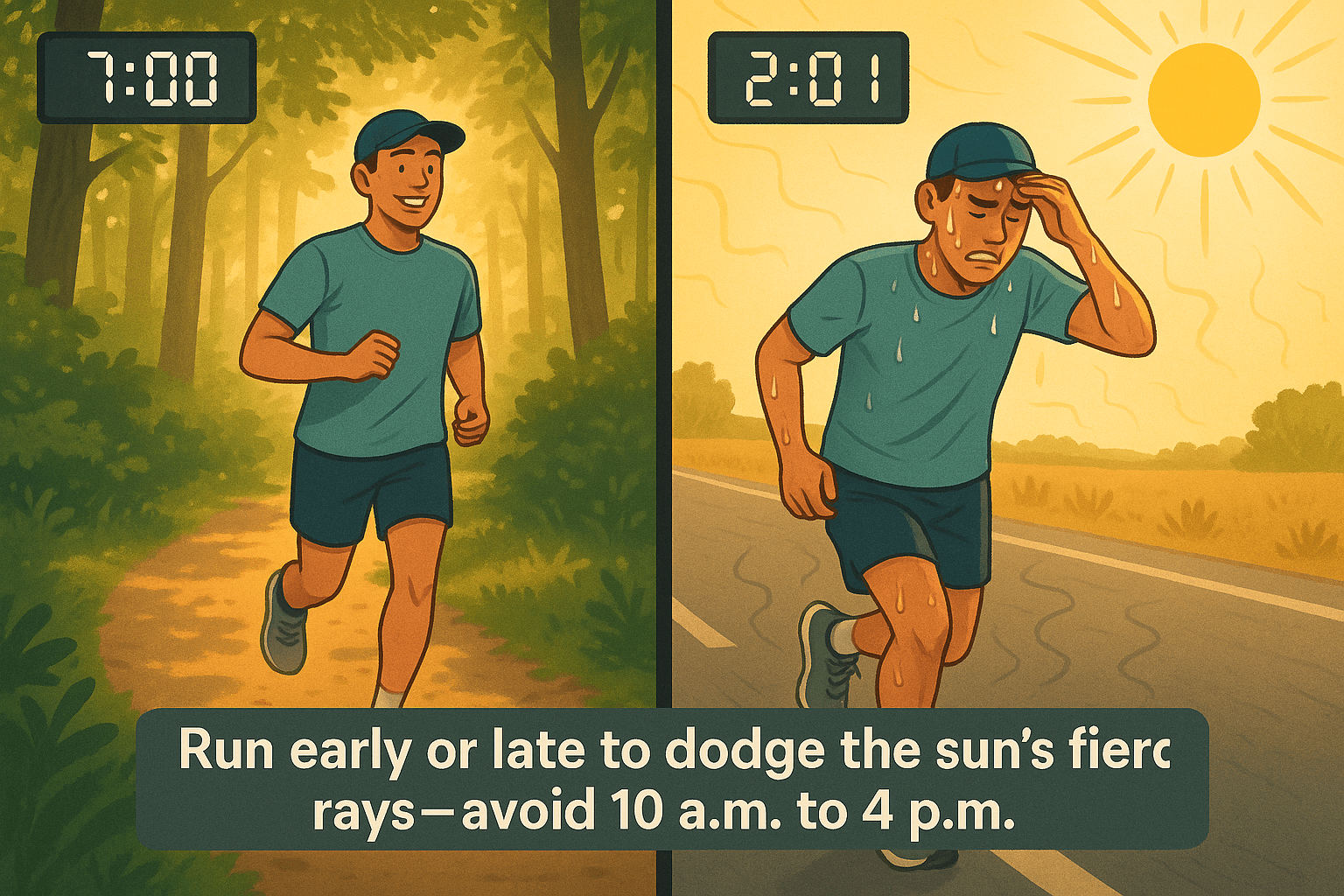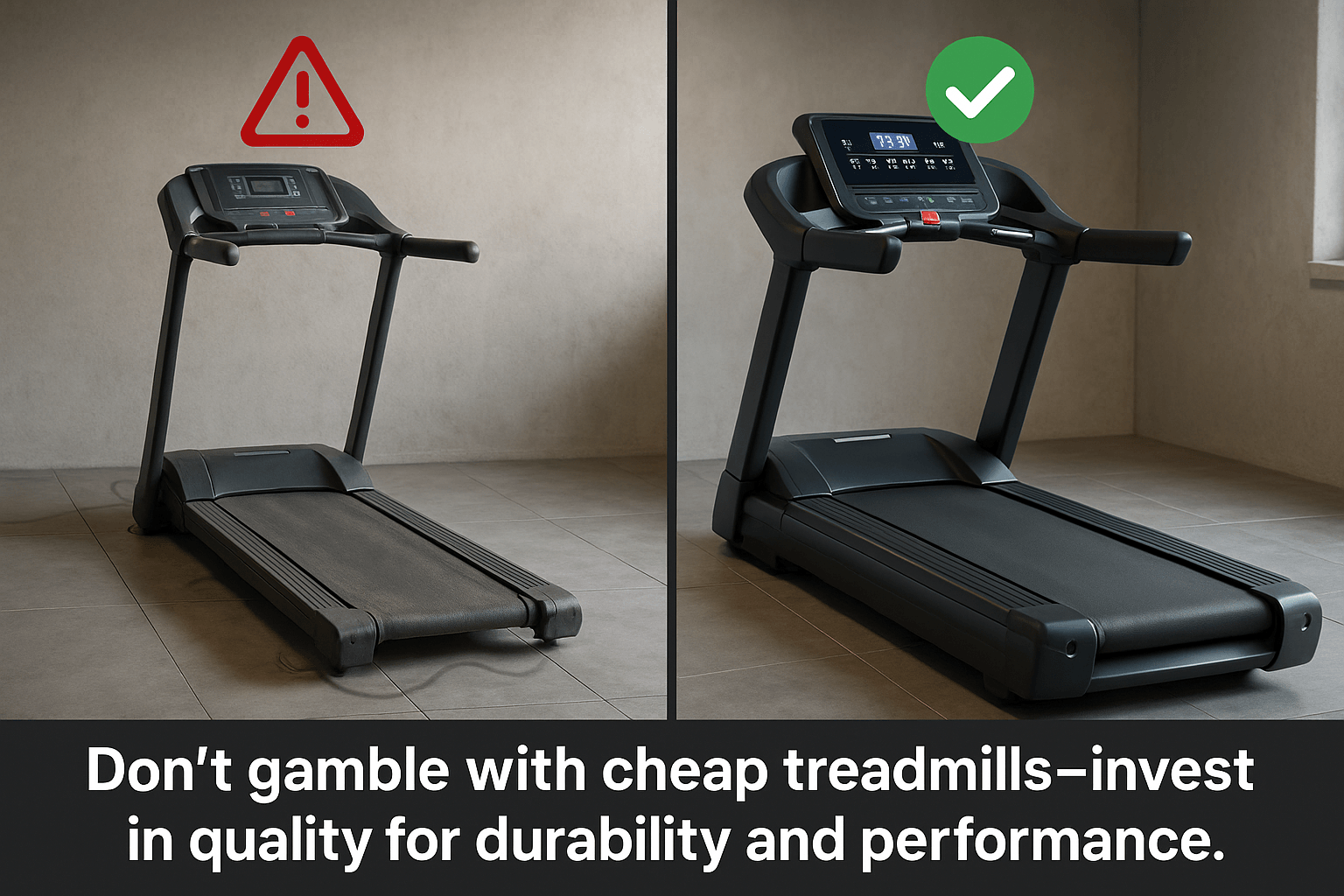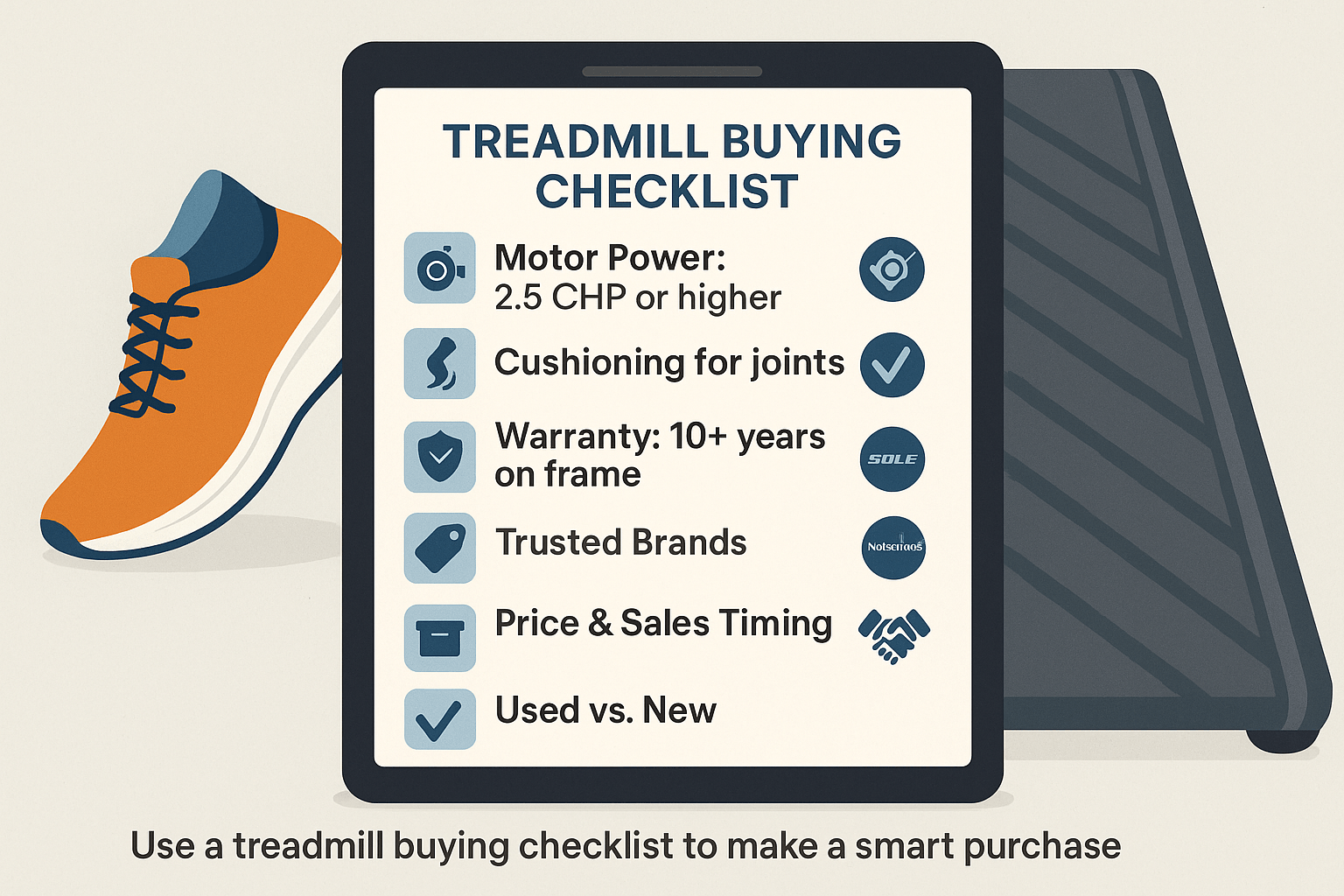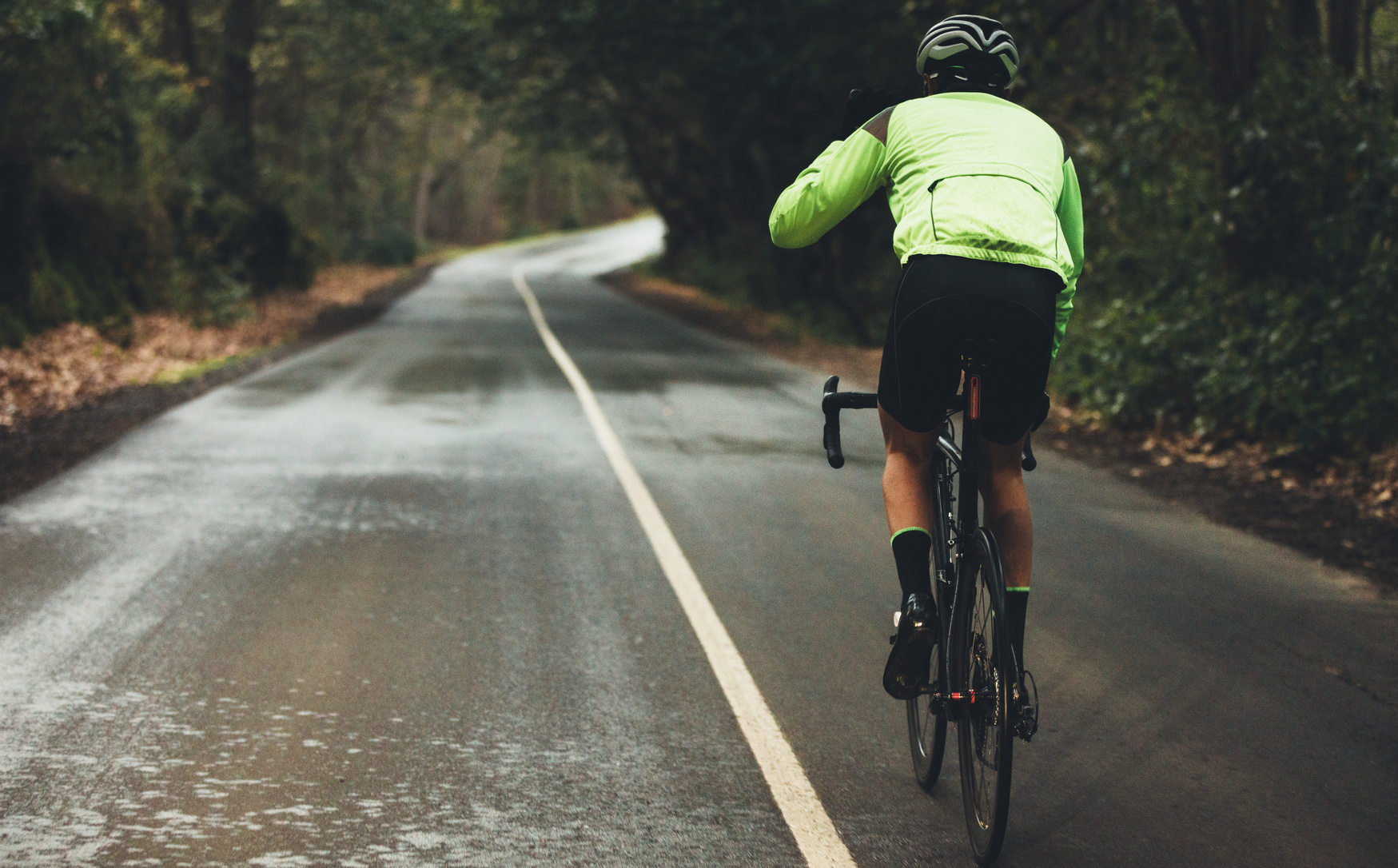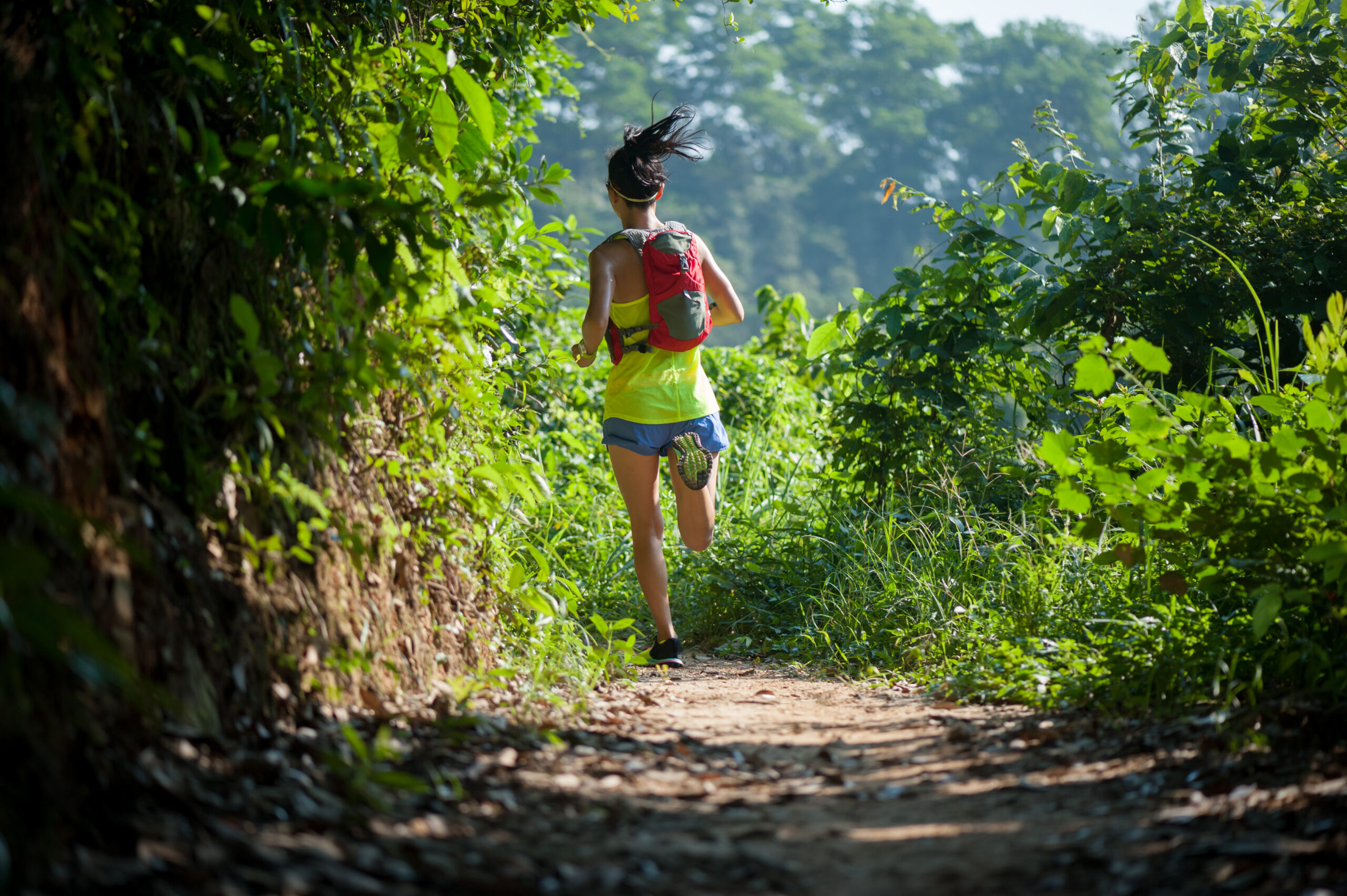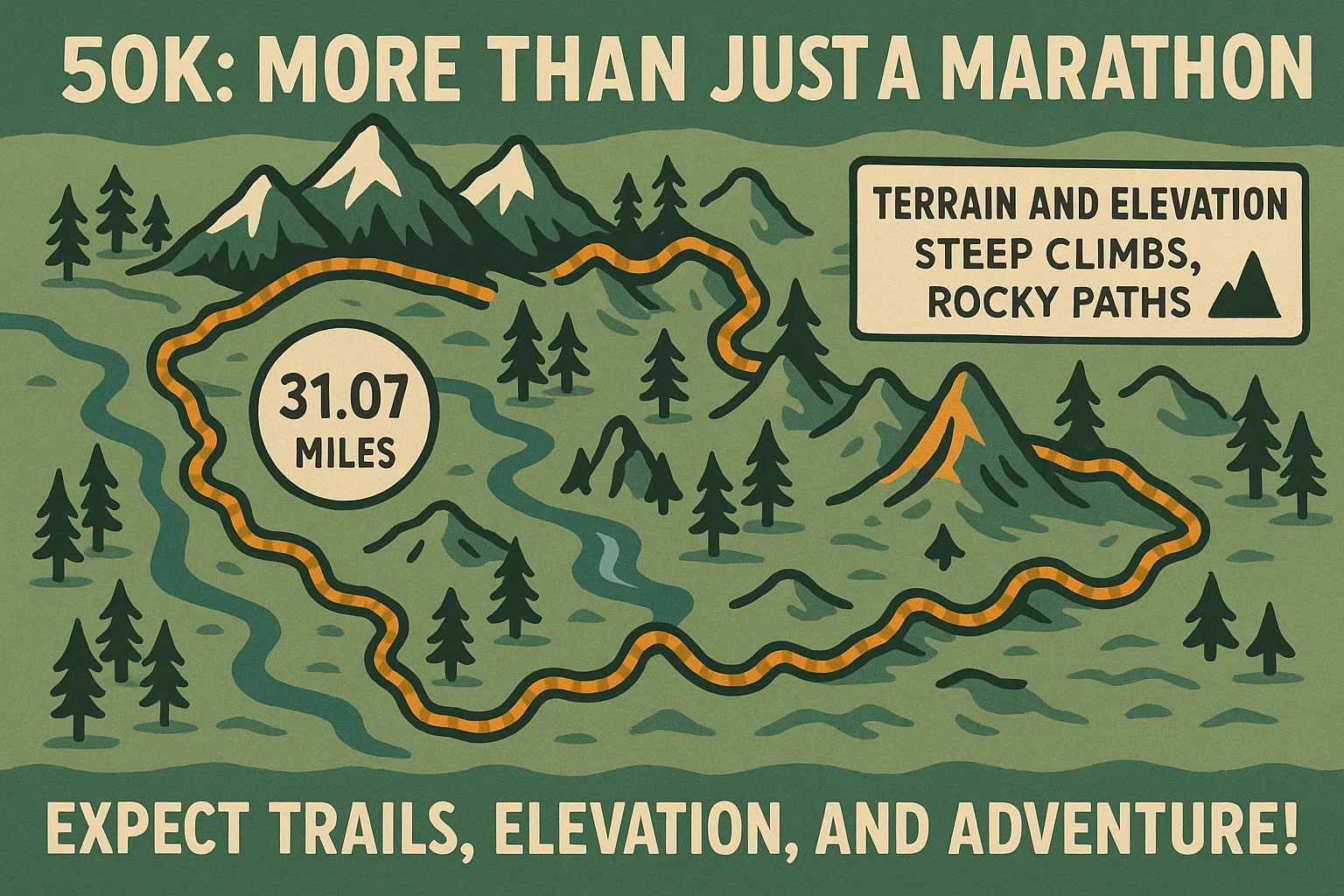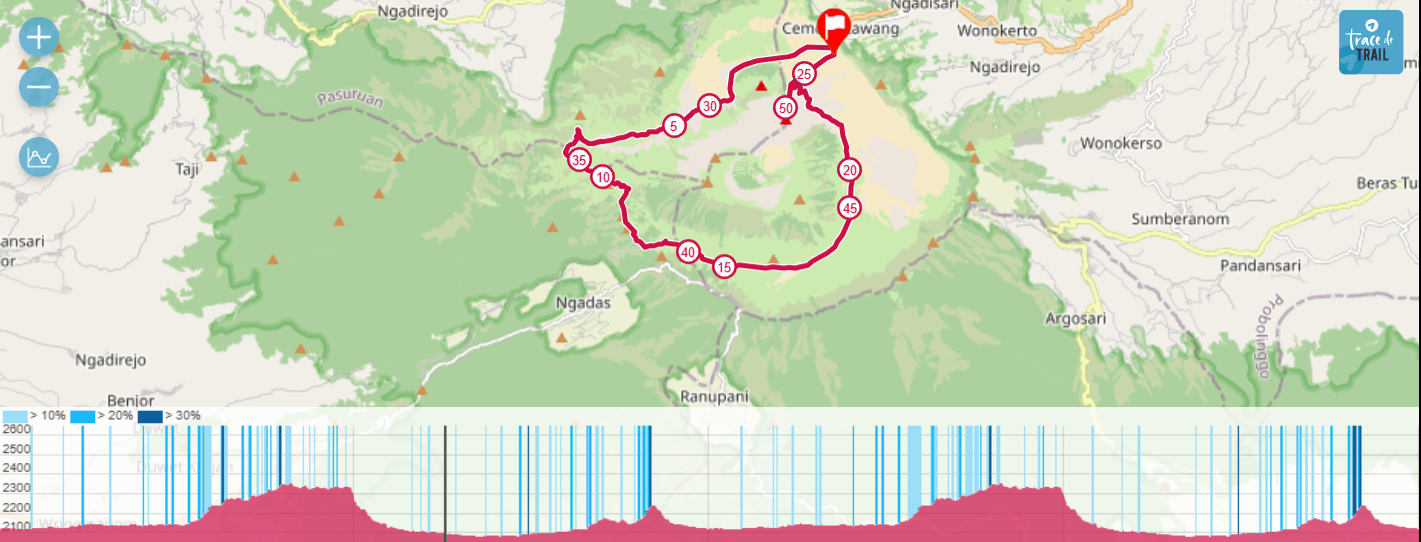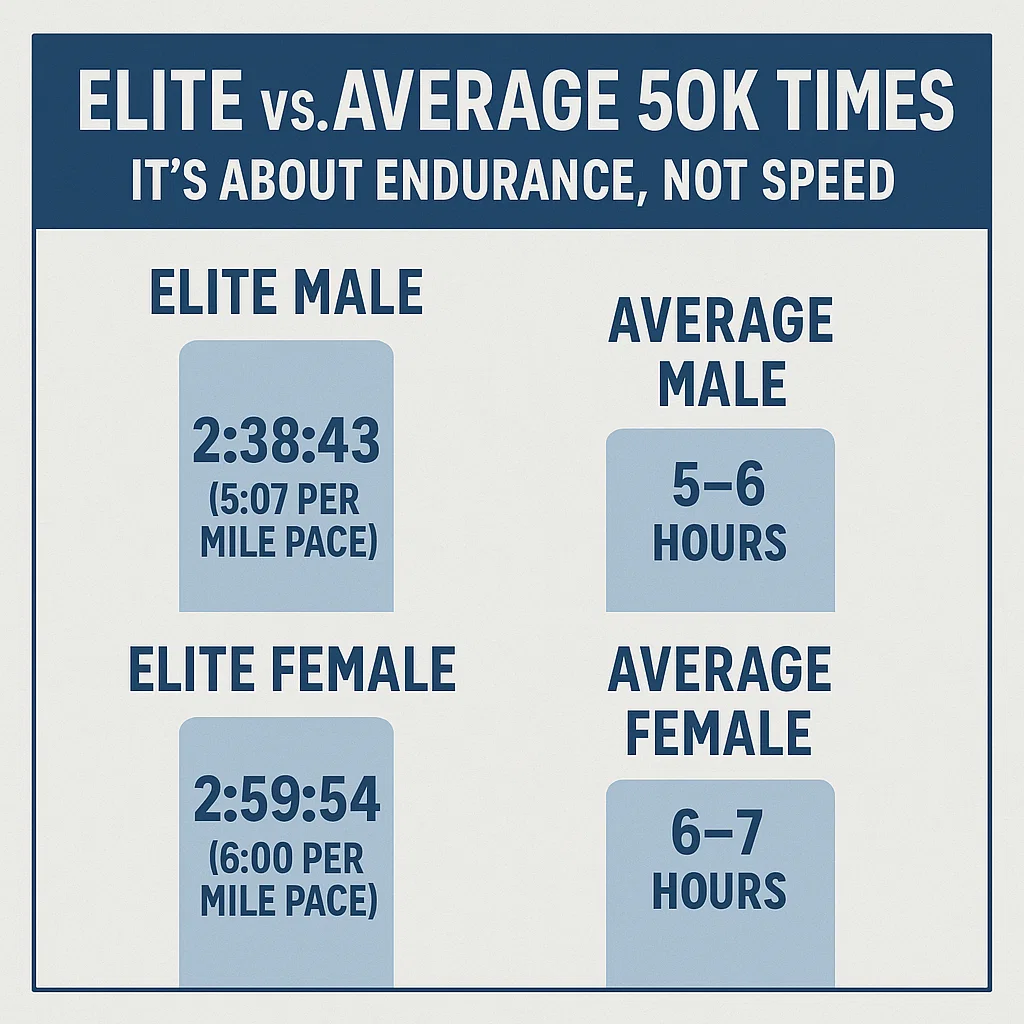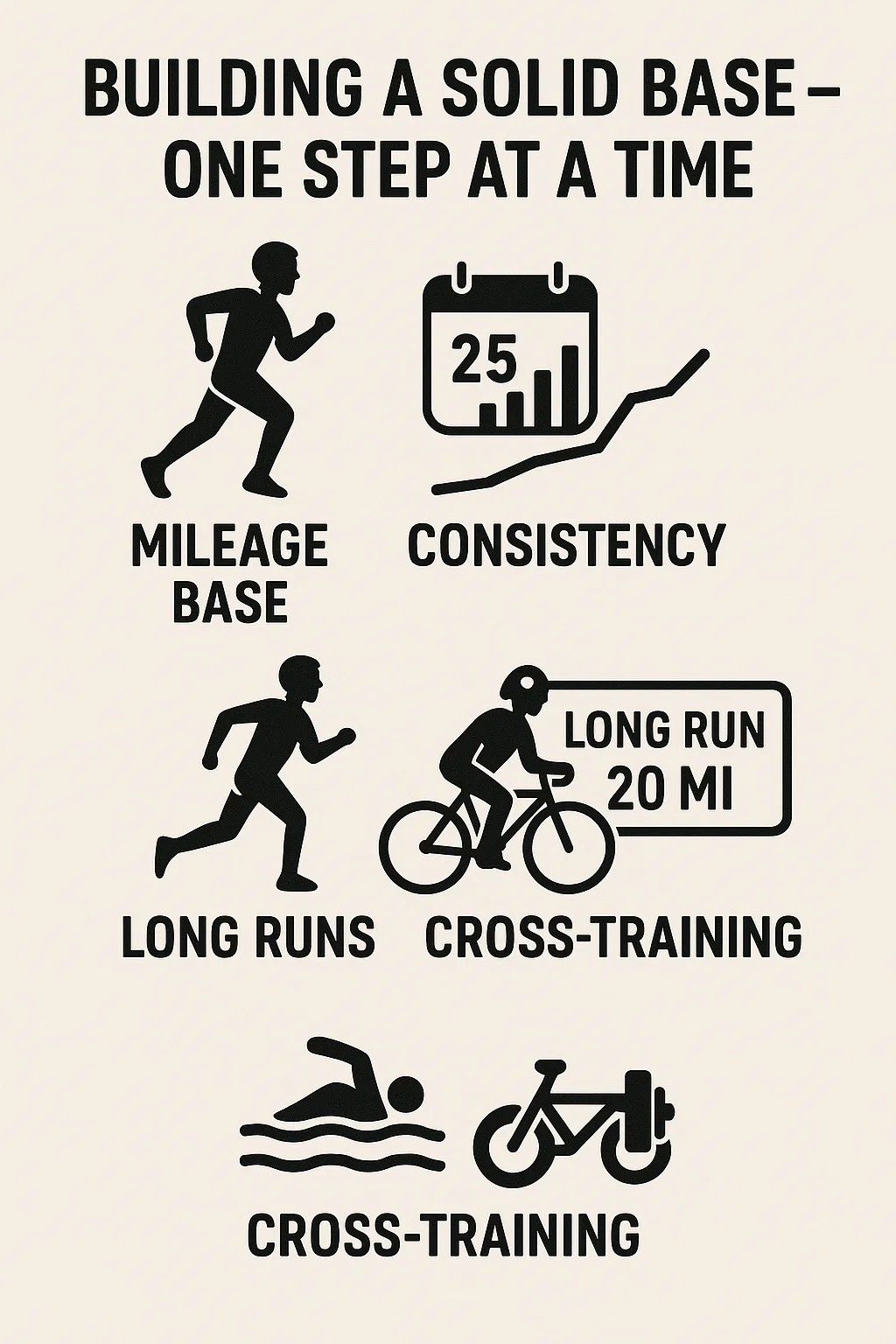I used to think bikes were for people who couldn’t handle the grind.
If it didn’t involve lacing up and hitting pavement, I didn’t want to hear about it.
Then my knees had other plans.
After one too many injury layoffs, I finally gave in and jumped on a bike.
It wasn’t love at first spin—but I’ll tell you what: cycling saved my running.
My legs got stronger, my lungs got bigger, and I stopped breaking down every time I hit peak mileage.
Let’s be clear—cycling isn’t cheating.
It’s cross-training that actually builds you up. You can ride hard and still call yourself a runner.
If your goal is to run stronger and longer without breaking, here’s how cycling fits in.
But first things first, let me tell more reasons why you should hop on a bike.
Why Runners Should Embrace the Bike
Cycling is the best cross-training tool we’ve got.
It gives you all the aerobic work with none of the pounding—and science backs that up.
The proof: In one study, runners who swapped out 50% of their mileage for cycling held their 3K race times and VO₂ max just as well as runners who didn’t.
That means you can run less, bike more, and still perform just as well.
Faster Recovery
Post-run soreness? DOMS after hills? Instead of hobbling around, spin it out.
- Easy bike rides boost blood flow
- They flush out junk (like lactic acid)
- They reduce soreness without adding more impact
Elite runners use cycling as “rest day” cardio. And for good reason—it works.
Build Endurance Without Breaking Down
You might hesitate to run 5 days a week for an hour (your knees would scream), but you can cycle for 5+ hours a week and feel fine.
- More aerobic volume = bigger engine
- No pounding = fewer injuries
Sound skeptical? Well, the truth is that you can ride for five hours a week and not break. Try running five hours and see what happens.
Stronger Legs = Better Running
Cycling hammers your quads and glutes—two muscle groups that runners often under-train.
After a few weeks on the bike, I noticed my stride felt stronger, my turnover improved, and hills weren’t so brutal.
My cadence got quicker—because my legs learned how to fire faster, without the cost of another run day.
Injury Prevention and Rehab Gold
Got shin splints? Knee pain? Plantar fasciitis? Nagging overuse injury? Cycling lets you train hard without the load.
One of my running friends recovering from plantar fasciitis told me that he cycled 5–6 days a week for a month.
When he returned to running, he actually felt stronger—his glutes, core, and upper legs had leveled up.
Cycling keeps your cardio base alive while giving your tendons, bones, and joints a break.
That’s huge for staying consistent and healthy.
It’s a Mental Reset
Burned out from pounding the same loops every day? The bike brings variety.
- Ride through a new route
- Try a spin class with music blasting
- Or hit the trainer while watching Netflix
You’ll stay mentally fresher. And that makes a huge difference in long-term training.
Muscle Breakdown: What Works When
Understanding the difference between running and cycling muscles helps you train smarter—and keeps you from being blindsided when switching between them.
Here are the functions of each muscle group on the bike:
| Muscle Group | Running | Cycling |
|---|
| Glutes | ✅✅✅ Major power in stride | ✅✅ Used especially on hills |
| Quads | ✅✅ Push-off, knee lift | ✅✅✅ Primary driver on the pedals |
| Calves | ✅✅✅ Shock absorption, toe-off | ✅✅ Stabilizers only |
| Hamstrings | ✅✅ Hip extension | ✅✅✅ Pull through pedal stroke |
| Core | ✅✅ Posture, balance | ✅ Basic stabilization |
Why it matters:
Cycling is low-impact, seated, and quad-heavy. Running is weight-bearing, impact-loaded, and calf-dominant.
That’s why a cyclist hopping into running might be shocked when their calves cramp and feet ache—those muscles never had to deal with impact before. And why runners feel their quads burning out after a few hard hill climbs on the bike.
But When You Combine the Two…
You get the best of both worlds:
- Stronger quads and glutes from the bike
- Durable calves and foot strength from running
- More total aerobic volume with less injury risk
- A fresher brain and a body that recovers smarter
It’s the one-two punch that builds tough, injury-proof legs and keeps you consistent—year after year.
Cycling Safety: What Runners Get Wrong
When I first started cycling, I figured, “I’ve ridden a bike since I was 10—how hard could it be?”
Big mistake.
Within weeks, I had a few close calls that shook me up and made me realize: cycling on the road is a whole different beast than running.
You’re moving faster, sharing space with 2-ton vehicles, and your machine has gears, brakes, and moving parts to manage.
Here’s what I learned (sometimes the hard way), and what every runner-turned-cyclist needs to know to ride safe.
1. Follow the Rules Like You’re Driving
On a bike, you’re not a pedestrian—you’re a vehicle. That means:
- Ride with traffic, not against it
- Stop at red lights and stop signs
- Yield when appropriate
Why? Because predictable riders are safer riders.
When you follow traffic laws, cars know what to expect from you.
That’s how you earn space and respect on the road.
2. Get Off the Sidewalk
Tempting? Yes. Safer? Nope.
Sidewalk riding is riskier than it looks:
- Drivers won’t see you coming at intersections
- You’ll scare pedestrians
- And you’ll likely end up in a car’s blind spot
If you’re nervous around traffic, pick quiet side streets or bike paths.
But stay off the sidewalk. Trust me—you’ll be safer on the road where drivers expect you to be.
3. Be Visible. Be Predictable.
Visibility is survival.
- Wear bright gear
- Use a white front light and red rear light at dawn, dusk, or in shade
- Don’t weave between parked cars
- Take the lane when needed, especially if it’s too narrow to share safely
- Use hand signals like you mean them—left, right, slowing down
Think of yourself as a communicator on wheels. When drivers know what you’re doing, they’re less likely to hit you.
4. Learn Your Gears (Before You Need Them)
Coming from running, I didn’t think about gears until I hit my first hill… in the wrong gear.
I practically stalled out and almost tipped over.
Lesson learned: shift early.
Here’s the rule:
- Downshift before a hill or stop
- Keep a smooth cadence, not a grind
- Don’t wait until your legs are screaming to change gears
Smooth shifting = happy legs.
5. Keep Your Head Up, Always
As runners, we get away with zoning out.
On a bike? You do that, you’re toast.
- Scan the road ahead for potholes, glass, car doors, people
- Stay out of the door zone—at least 3 feet from parked cars
- Watch every intersection and driveway
- Make eye contact with drivers when possible
- No texting. And if you listen to music, one earbud max
Riding defensively isn’t being paranoid—it’s being smart.
6. Ride With a Group or a Buddy
If traffic makes you nervous, find a group ride or ride with a friend. You’ll learn:
- How to draft
- Group hand signals
- How to ride in traffic without panicking
And yeah—you’ll be more visible in a pack.
I joined a few local rides early on, and I credit those miles for giving me the confidence to ride solo later without fear.
7. Pre-Ride Safety Check
Every time, before you roll:
- Check tire pressure
- Test your brakes
- Lube your chain
- Helmet on, ID in your pocket, cash and phone just in case
Optional but smart: mini first-aid kit (road rash happens).
Doesn’t take long, but it could make all the difference when things go sideways.
Sample Week: Running-Focused With Cycling for Support
So you’re trying to run strong and keep the wheels spinning? Smart move.
But here’s the deal—you can’t go hard every day.
Running and cycling both beat you up in different ways, and if you treat every day like a workout, your body’s going to push back… hard.
Here’s how to train smart:
Sample Week Breakdown
Monday: Easy Run (30–40 min)
- RPE: 3–4 (comfortable conversation pace)
- Purpose: Shake out the weekend fatigue
- Optional: light core or bodyweight strength work
Coach tip: Keep this truly easy. Save your legs for Tuesday.
Tuesday: Hard Run Workout
- Examples: 6 × 400m at 5K pace, 3 miles at tempo, or fartlek-style intervals
- Purpose: This is your key speed session. Bring the focus.
- NO cycling today unless it’s a lazy spin (10–15 min max)
Coach tip: Quality > quantity. Nail the form, hit the paces, and recover hard afterward.
Wednesday: Recovery Ride (20–30 min spin)
- Effort: Zone 1 (RPE 1–2, embarrassingly easy)
- Cadence: 90+ RPM with zero resistance
- Purpose: Circulation, not training stress
Coach tip: If your ego’s getting in the way of spinning easy, ride indoors where no one can see you. Or skip it. This ride should feel pointless—that’s how you know it’s doing its job.
Thursday: Steady Medium Run (45–60 min)
- Effort: Zone 2 (RPE 5–6)
- Optional finish: A few 20-second hill strides to wake up the legs
- Purpose: Aerobic development and controlled endurance
Coach tip: You should finish this with gas left in the tank. If you feel wiped, you went too hard.
Friday: Moderate Cycling Workout (40–60 min)
- Example: 5 × 3-minute hill climbs with 2 min recovery spins
- Effort: RPE 7–8 on the climbs, Z1/Z2 the rest
- Purpose: Strength without impact
Coach tip: Stay seated, drive through the glutes. Think of this as gym day for your legs—with less risk to your knees.
Saturday: Long Run (75–90+ min)
- Effort: Easy Zone 2 (conversational pace)
- Purpose: Time on feet, build endurance
Coach tip: If you’re looking at your pace, you’re doing it wrong. This is about building the aerobic engine, not proving how fast you can run tired.
Sunday: Rest or Gentle Active Recovery
- Options: Full rest, light yoga, easy swim, or a 15–20 min recovery ride
- Effort: Minimal. Nothing that requires willpower.
Coach tip: Adaptation happens when you let your body breathe. If you always feel “on,” you’re not recovering—you’re just breaking down slowly.
Weekly Mix Recap
- Running: 3–4 days (2 hard, 1 long, 1 easy)
- Cycling: 2–3 sessions (mostly light, with 1 quality day)
- Intensity: Balanced across the week (never back-to-back hard days)
Sample Week 2: 50/50 Balanced Plan
(aka The “Stay Healthy, Still Get Fit” Setup)
If you’re injury-prone, coming back from a strain, or just want to give your joints a break, this kind of week is gold.
Half running, half cycling, smartly split.
You’re still logging quality, but without beating your legs into the ground.
This plan keeps your aerobic engine revving while reducing impact—and gives your body room to recover and adapt.
Let’s break it down.
Weekly Overview
- Goal: Maintain running fitness, reduce injury risk, and build cycling strength
- Structure: 3 run days (1 hard, 1 steady, 1 short/off-bike) + 3–4 bike days
- Intensity: One hard run, one moderately intense ride—rest is aerobic or recovery
Monday – Easy Recovery Ride
- 45 minutes
- Spin easy, Zone 1
- High cadence, low resistance
This isn’t training—it’s flushing out fatigue. Spin the legs, loosen up, maybe toss on a podcast or just zone out. It’s active recovery after a bigger weekend. Keep it super chill.
Tuesday – Quality Run Workout (Speed Play or Intervals)
- ~5 miles total
- Main set: 6 × 2-minute pickups (RPE 8+)
Time to push. With Monday’s ride behind you, the legs should feel primed. Go by effort, not pace. Keep the pickups strong but sustainable—you’re not trying to win a 400m here. Easy jogs between reps. Don’t skip the warm-up and cooldown.
Wednesday – Endurance Ride (Zone 2 Builder)
- 60–90 minutes
- Steady Zone 2 ride, conversational effort
This replaces your typical midweek medium-long run. It builds aerobic capacity without the pounding.
Indoors? Load up a podcast or audiobook.
Outdoors? Pick a flat or rolling route. You’ll finish feeling worked, not wrecked.
Thursday – Steady Run (Cruise & Optional Strides)
- 40 minutes, easy pace (Zone 2)
- Optional: 4 × 20-second strides post-run
Nothing fancy here. Just log miles, enjoy the movement.
This could be a trail day or a soft surface run.
Strides at the end keep your form sharp, but skip them if anything feels tight.
Friday – Strength or Light Cross-Training
- Option A: 30 min easy spin, swim, or elliptical
- Option B: Strength or PT work (glutes, core, mobility)
This is prehab day.
Do your foam rolling.
Hit the hips and core.
If you’re rehabbing, this is where your PT homework goes.
Don’t go hard—this day is about maintenance, not maxing out.
Saturday – Long Ride + Brick Run (Optional)
- 90-minute bike ride (Zone 2 with optional surges)
- Optional 10–15 minute transition run (slow jog)
Here’s your “combo day.”
Start with a solid aerobic ride.
In the second half, add some short 1-minute surges every 10 minutes if you feel strong.
Then, toss on the running shoes for a short brick jog—just to get that jelly-leg adaptation in.
Keep it slow and smooth. If you’re injury-sensitive, skip the run. No shame.
Sunday – Rest & Recovery
- Total rest
- Eat well, walk, stretch
Recharge. Hydrate. Maybe do some light mobility or a chill walk. No structured training today—give your nervous system a full breather.
Training Balance Tips
- Listen to your body.
- If a ride leaves your legs cooked, ease up on your next run.
- If your long run takes more out of you than expected, spin instead of smashing intervals the next day.
- Flexibility > perfection.
Red Flags to Watch
- Morning heart rate +5 bpm above normal?
- Trouble sleeping, constant fatigue, or low motivation?
- Legs feel like lead bricks for more than two days?
Those are signs you’re doing too much. Back off. You won’t lose fitness in a couple of light days, but you’ll lose weeks if you crash.
Endurance Zone 2 Ride – The Aerobic Engine Builder
Who it’s for:
Every runner. Seriously. Whether you’re chasing a marathon finish or just need a low-impact mileage boost, this is your go-to.
Perfect for building stamina without beating up your legs. And if you’re new to cycling? This is your no-pressure entry point.
What it improves:
Zone 2 riding builds your aerobic base — the foundation of endurance performance.
It boosts your heart’s efficiency, strengthens your lungs, and trains your body to burn fat as fuel.
All of that adds up to stronger long runs and faster recovery between workouts.
Oh — and it’s impact-free. So you’re stacking volume without hammering your joints.
How to do it:
- Warm-up: 10 minutes of easy spinning
- Main ride: 45–90 minutes in Zone 2 (60–70% of your max heart rate)
- That’s about RPE 4–5 — you should be able to talk in short sentences but not sing karaoke.
- If you’re huffing, you’re going too hard.
- Cadence: 80–90 RPM (smooth, not grindy)
- Cool-down: 5–10 minutes easy spin
Start with 45 minutes and work your way up. Aim for 1–2 Zone 2 rides a week during base training — more if you’re injured or replacing easy runs.
Speed Intervals on the Bike – VO₂ Max Booster
Who it’s for:
Time-crunched runners or anyone who wants to train that top gear.
If you want to push your VO₂ max and raise your redline — this is your session.
Perfect for sharpening fitness without trashing your legs like run intervals can.
What it improves:
Your max aerobic capacity — aka, how much oxygen you can use at full throttle.
That translates to faster 5Ks, stronger surges in races, and better endurance at all paces.
Bonus: because cycling targets the muscles a bit differently, you’ll get a killer workout without the impact wear-and-tear.
How to do it:
- Warm-up: 10–15 min easy spin with 2–3 short pick-ups (10 seconds fast)
- Main Set: 6–8 rounds of:
- 1 minute hard (RPE 9/10 — not a sprint, but dang close)
- 1 minute easy spin (light resistance, low gear)
- Cool-down: 5–10 minutes easy
If 1 minute feels like too much to start, begin with 30 seconds hard / 30 seconds easy for 10+ rounds. Build up.
Feeling fit? Try 2 minutes hard / 2 minutes easy. Fewer reps, but deeper burn.
Tabata Sprints (20:10 HIIT Blitz)
Who it’s for:
Busy runner? Short on time? Tabata’s your no-excuse weapon.
This one’s for folks who want maximum intensity in minimum time.
Perfect if you’re plateauing, need a new challenge, or just want to fry your lungs in under 20 minutes.
But fair warning: this is not beginner territory. Scale it down if needed.
What it improves:
This classic HIIT format hits both ends of the fitness spectrum—your all-out sprint power and your aerobic engine.
The original Tabata study? Six weeks of 4-minute sessions led to 28% boost in anaerobic capacity and 14% jump in VO₂ max.
For runners, that means:
- Faster recoveries between surges
- Better kick at the end of a race
- A higher ceiling overall
How to do it (Spin Bike or Trainer):
- Warm-up: 10 minutes (toss in a few 20-second efforts to prep legs and lungs)
- Find a hard gear or bump the resistance
- Go: 20 seconds full send — RPE 10+, gasping for air by the end
- Recover: 10 seconds easy pedal (or full stop if needed)
- Repeat: 8 times = one brutal 4-minute round
You’ll hate it by round 5. That means it’s working.
Full session layout:
- Warm-up: 10 min
- Round 1: 8 × 20s on / 10s off
- Recovery: 2 min easy spin
- Round 2: same
- Recovery: 2 min
- Optional Round 3 (only if you’re hitting true effort)
- Cool-down: 5–10 min
Start with just one round if you’re new. Add a second once you stop seeing stars afterward. If your third round is half-hearted? Don’t bother—quality > quantity.
During sprints:
- Keep a tall posture
- Drive hard through the legs
- Engage the core, don’t rock your upper body
- Pedal in smooth circles — push and pull
Use a Tabata timer or app — trust me, you won’t be able to count once the burn kicks in.
Do this once a week, max. Not before a long run or hard workout. Your legs and lungs will need a breather.
Hill Climb Repeats (Strength Training on Wheels)
Who it’s for:
If you dread hills on runs—or just want bulletproof legs—this is your jam.
Hill repeats on the bike build climbing power, mental toughness, and muscular endurance with zero pounding on your joints.
They’re great for:
- Prepping for a hilly race
- Subbing in for a leg day at the gym
What it improves:
Targets the big movers:
Plus your cardiovascular system works overtime to push against gravity (or resistance). You’ll climb stronger and run faster flat-out just from the strength boost.
I’m gonna recommend two routines:
Option 1: Outdoors
- Find a steady hill (5–8% grade works great)
- Warm-up, then climb 3–5 minutes at RPE 8 (hard but not maxed)
- Stay seated as much as possible — feel glutes and quads doing the work
- Stand up for 15–20 pedal strokes if you want to simulate an attack
- Use the downhill for full recovery (2–4 minutes easy spin)
- Repeat 4–6 times
- Cool down on flat roads or easy spin home
💡 Bonus: Builds “real-world” confidence for hilly terrain.
Option 2: Indoors (Trainer or Spin Bike)
- Warm-up: 10 min easy
- Intervals: 5 × 4 minutes at high resistance (60–70 RPM = uphill grind)
- Recover: 2–3 minutes between sets at low resistance
- Stay mostly seated, hands relaxed, back straight
- Add 15 seconds out of the saddle each interval to simulate a burst
- Cool down: 5–10 min
Form focus: smooth pedal strokes, full-circle motion, no wild thrashing.
How to schedule it:
- Once a week is plenty
- Don’t stack it before a big long run or speed workout
- Use it as a substitute for a lower-body strength day or as a finisher on cross-training day
Recovery Spin — “The Flush Ride”
Who it’s for:
Everyone. Beginners, elites, banged-up runners, overtrained weekend warriors — everyone can benefit from this one.
If your legs feel wrecked after a long run or a tough race, this is the fix.
Think of it as a moving massage, not a workout.
What it does:
A recovery spin clears the junk out of your legs.
It boosts circulation, speeds up muscle repair, and helps you bounce back faster — all without beating your body up.
You’re not training fitness here. You’re helping your last workout sink in.
It’s the cycling version of an easy jog — only even gentler.
Studies show active recovery helps clear out lactate and soreness better than sitting on your couch.
And honestly, it just feels good. I’ve used these flush rides the day after long runs, and my legs feel noticeably fresher afterward.
If I ran instead, I’d just pile on more fatigue.
How to do it:
Ride stupid easy. Like, “this barely counts” easy.
- Time: 20–45 minutes
- Effort: RPE 1–2 out of 10
- Heart rate: Zone 1 (<60% of max)
- Power (if you’ve got a meter): <50% of FTP
- Cadence: Moderate to high (80–90 rpm)
- Surface: Flat pavement, bike path, trainer — whatever’s smooth and chill
You should be able to hold a conversation and breathe through your nose the whole time.
If you finish and feel more tired? You did it wrong.
Bonus Tricks to Keep It Easy:
- Ride out on a slight downhill so you cruise back slower
- Throw on a chill playlist or an easy TV show indoors
- Use the spin as meditation — focus on breathing and loosening up
- Ride on grass or trails to naturally keep your speed low
For Injured Runners:
These spins are gold. If you’re recovering from a calf, hamstring, or foot issue, but can still bike pain-free, these light rides keep the blood flowing without irritating the injury.
Just make sure your bike fit isn’t stressing the wrong area. If it hurts — stop.
How to Adjust Your Schedule to Avoid Burnout
Blending running and cycling is powerful — but it’s also a trap if you’re not careful.
I’ve been there: stacking workouts back-to-back, thinking biking was “free” because it’s low-impact… and then wondering why I was fried and grumpy all the time.
Here’s how to do it right — without digging yourself into a recovery hole.
1. Coordinate Hard and Easy Days
This is non-negotiable.
Your body doesn’t care whether the pain came from a 10K tempo or a 45-minute bike interval session — stress is stress. You can’t keep hammering.
Here’s the rule of thumb:
If today was a hard run, tomorrow is either:
- an easy spin
- a total rest day
- or a very gentle shakeout run
Same thing in reverse — hard bike today? Tomorrow’s run better be easy.
Pro coaching tip: No more than 3–4 total “intense” sessions per week, across both sports. That could be:
- 2 hard runs + 2 hard rides
- 3 runs + 1 ride
- Or whatever mix fits your goal
But once you start doing 5+ hard sessions a week, you’re not adapting — you’re just accumulating fatigue.
Rest = Gains
Don’t skip this: you get stronger from rest, not just the workout.
The work tears you down. The recovery builds you back.
So schedule rest with the same intention you plan your long runs. It’s not lazy — it’s essential.
If your resting heart rate is creeping up, your sleep sucks, and you’re irritable? That’s your body begging for rest.
Not another “bonus ride.”
2. Watch for the Red Flags of Overtraining
Be your own coach. That means paying attention when your body’s waving the caution flag.
Overtraining isn’t always dramatic — it usually creeps in. If you catch it early, you can adjust and keep moving forward. But if you ignore it? That’s when the wheels come off.
Here’s what to watch for:
- Elevated Resting Heart Rate
If your usual morning pulse jumps by 5–10+ beats and stays there for days? That’s a sign your system’s under stress. - Chronic Fatigue
Not “a little tired from yesterday’s workout.” This is heavy-leg, brain-fog, “I need four cups of coffee just to function” fatigue. - You’re Slowing Down (Despite Working Hard)
Training hard but racing slower? Legs never feel sharp? Could mean your body hasn’t had enough recovery. - Mood Shifts
Snapping at people? Dreading runs? Feeling anxious or flat? Overtraining hits your mood as much as your muscles. - Sleep or Appetite Goes Haywire
Wide awake at 2 a.m. for no reason? Appetite spiking or vanishing? System overload. - Nagging Aches or Getting Sick More
If little injuries keep showing up, or you’re catching every cold in town, your immune system might be waving the white flag.
Bottom line: don’t ignore these signs. Take a rest day. Drop intensity. Sub in an easy ride or chill. A few smart adjustments now can save your season later.
3. Add Volume Gradually
When you first add cycling, it might feel like free fitness. No sore legs? No problem, right?
Not so fast.
Fatigue from the bike builds just like run mileage — it just hides better.
Stick to a 10–20% increase in total training load per week.
Rough guide: 1 mile of running ≈ 3 miles of biking in training stress.
So if you’re running 30 miles a week, jumping into 100-mile bike weeks is asking for trouble. Ramp up slow and track how you feel.
4. Periodize Like a Pro
You can’t train at peak for both sports all year. That’s a fast path to burnout.
You’ve got to cycle your training focus — literally.
- Race phase? Keep the bike easy. Use it for recovery, not crushing.
- Base phase? Go heavier on the bike to build aerobic strength.
- Winter/off-season? Flip the focus. Give running legs a break.
Think of it like shifting gears. You’re not slamming both pedals at once — you’re using the right gear for the right terrain.
5. Track Your Workload (and Your Body)
You don’t need a $500 watch to train smart — just a log and some honesty.
Write down:
- Resting HR
- Sleep quality
- How you felt that day (“dragging,” “decent,” “snappy”)
- Any soreness or weird twinges
Over time, you’ll spot patterns.
Like, “Every time I do a long run followed by a hard bike session the next day, I crash.” That’s your training log giving you gold.
Apps like TrainingPeaks, Garmin Connect, or even a notes app can track combined stress. But even a notebook and three smiley faces can work if you’re consistent.
Spin Classes for Runners: Worth It? Absolutely—Here’s Why
Not into dodging traffic or crafting your own bike intervals?
No worries—spin class has your back.
For runners, it’s one of the smartest ways to cross-train. I’ll admit, I used to think spin classes were just flashy music and people pretending to ride mountains. But after a few sessions, I was hooked. It’s structured, sweaty, and deceptively brutal in the best way.
Show Up, Zone In: No-Brainer Training
The beauty of spin is that you don’t have to think. Just show up and let the instructor guide the ride.
Sprints, climbs, fast flats, recovery spins—it’s all built in.
You’re not out there grinding intervals alone in a cold parking lot. You’re in a room with pumping music, someone yelling cues, and a dozen other people sweating alongside you.
You’ll push way harder than you would solo—and somehow, the time flies.
Aerobic & Anaerobic Gains, No Impact
Most spin sessions sneak in HIIT without you even realizing it. Every song is basically a new interval—hard push, recovery, repeat.
You’re working aerobic endurance and anaerobic power at the same time. Like a fartlek workout on wheels.
I know runners who hit spin hard twice a week and come back faster on the trails.
One spin instructor I trained with used to drop us all on hills—and she credited her bike sessions 100%. It’s that grinding leg strength from high-resistance intervals that makes the difference.
And here’s the best part: zero impact. You can go full-throttle without pounding your joints.
That’s a game-changer if you’re dealing with foot pain, shin splints, or just need a break from the daily run grind.
Motivation on Tap
Let’s be honest—cross-training can feel like a chore. But spin has this weird power to hype you up.
Dim lights. Loud music. One instructor yelling “Add resistance!” just as the beat drops.
Suddenly, you’re climbing out of the saddle like your life depends on it.
I’ve shown up to 6am spin classes half-asleep and left dripping sweat, fully alive, and wondering why I don’t do it more often.
If you’re someone who slacks during solo cross-training, this might be your fix.
First Spin Class? Here’s How to Crush It
1. Get There Early. Tell the instructor you’re new. They’ll help adjust your seat and handlebars. Proper fit = zero knee pain later.
2. Bring Water & A Towel. You’re gonna sweat. Like… a lot. Hydrate before, during, and after.
3. Ease Into Resistance. You’ll hear “add a turn” or “find your hill.” Don’t max out too soon. Use just enough tension to feel it without bouncing in the saddle.
4. Push Outside the Comfort Zone (But Don’t Die). Sprint when the group sprints. Climb when the beat drops. But if your lungs are in revolt? Back off. You’ll get stronger every class.
5. Nail Your Form
- Don’t death-grip the bars
- Shoulders relaxed, core tight
- When standing: hips back slightly, smooth pedal strokes
- Think “circles with your feet,” not piston mashing
These tweaks go a long way in avoiding soreness where you don’t want it (like your back, wrists, or knees).
6. Let It Be Fun. The first class might feel like a punch in the gut. But once you get the flow, it gets addictive. The music, the group, the sweat—it starts to feel like a celebration of effort. A break from pounding pavement, but still tough as hell.
Are Spin Classes Worth It for Runners?
Short answer? Yes. If you use them right.
Spin classes are one of the best bang-for-your-buck cross-training tools for runners—especially if you struggle with motivation on solo rides or want to cycle without messing with traffic and bike maintenance.
You get a killer workout in a controlled setting, no matter the weather, no gear needed. Just show up and get your sweat on.
And let’s be honest—on days when the idea of one more treadmill run makes your soul groan, a good spin class with thumping music can shake you out of the monotony and give you that endorphin rush you didn’t know you needed.
One Caution: It’s Still a Hard Workout
Don’t let the dim lights and pop music fool you—spin can wipe you out just as fast as a tempo run.
Slot it in like you would any hard session. That means:
- Don’t spin hard the day after intervals
- Don’t treat every spin like a race
- Give yourself time to recover
Many spin instructors teach multiple classes a week—but most of us aren’t built for that load. Respect the effort, and your legs will thank you.
Pro tip: Nervous about your first class? Pick a bike in the second row. You’ll see the instructor and experienced riders without feeling like you’re on display. And truthfully—everyone’s too busy sweating to care what you’re doing.
Recap: Why Cycling Helps Runners
- Less impact, more aerobic volume
- Builds stronger glutes and quads (hello, better hill running)
- Fights burnout with variety
- A recovery tool that actually works
- Cross-trains muscles you didn’t know were weak
You don’t have to go full “cyclist.” You don’t need Lycra kits or carbon bikes. Just swap one weekly run for a ride—outdoors, spin class, whatever you’ve got.
Even one low-key ride per week can unlock better recovery and a fresher mind. Add a second, and you might start noticing faster paces on fewer running days.
Your Move
Still skeptical? That’s fair. But consider this your nudge:
- Try one spin class this week
- Or hop on the gym bike for a 30-minute low-key session
- Or borrow a friend’s bike and go chase some wind
You might be surprised at how different—but good—your next run feels.
Running and cycling aren’t rivals. They’re teammates. Use both, and you’ll be stronger, more resilient, and probably a lot less banged up.
Let’s Talk
What’s your biggest hesitation about adding cycling to your training? Worried about losing run fitness? Not sure where to start?
Drop your question. I’ve been there, and I’ll help you figure it out.


